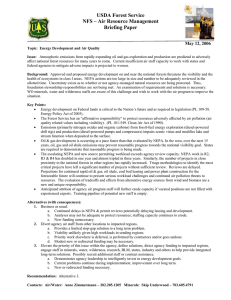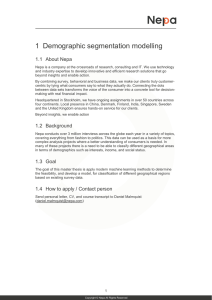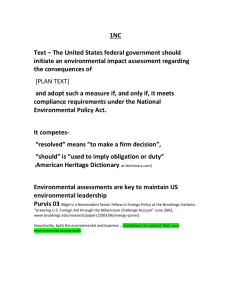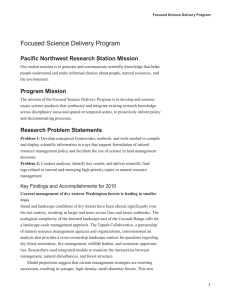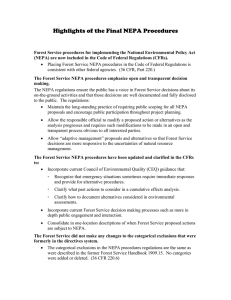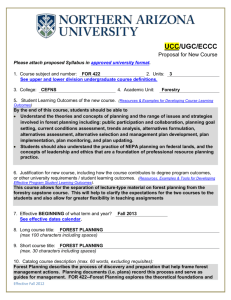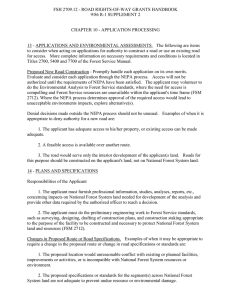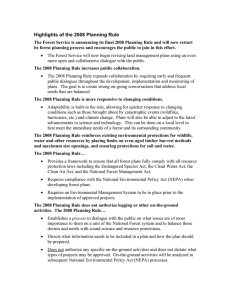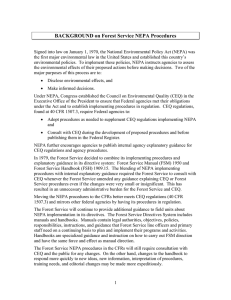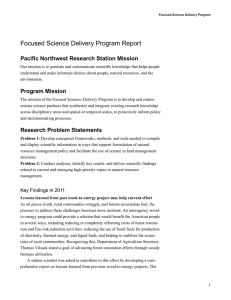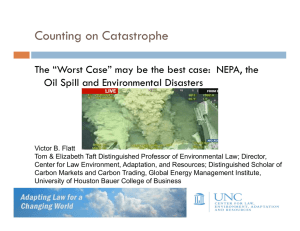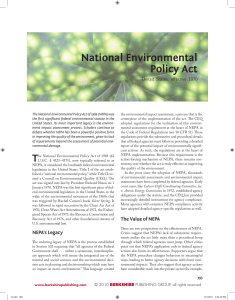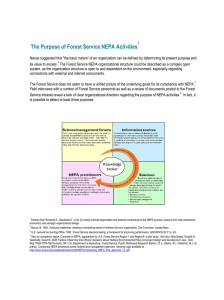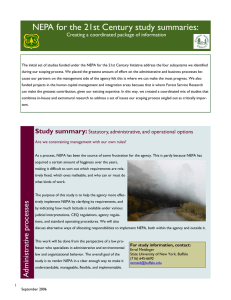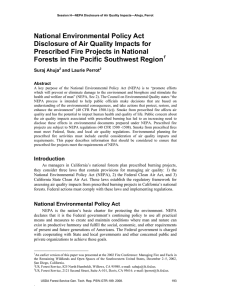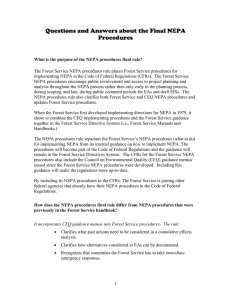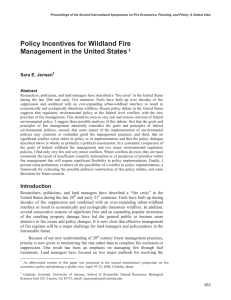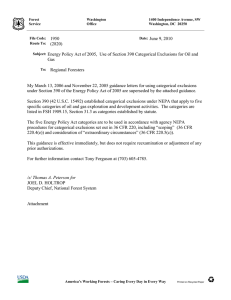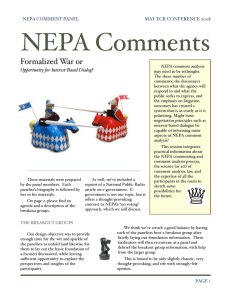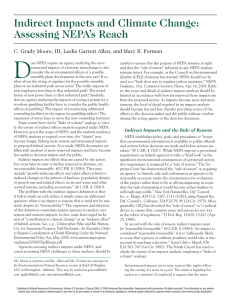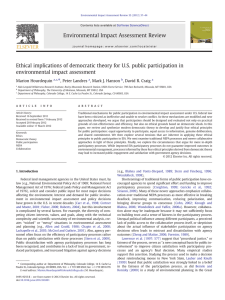Knowledge Management for the NEPA Community Background & Need
advertisement
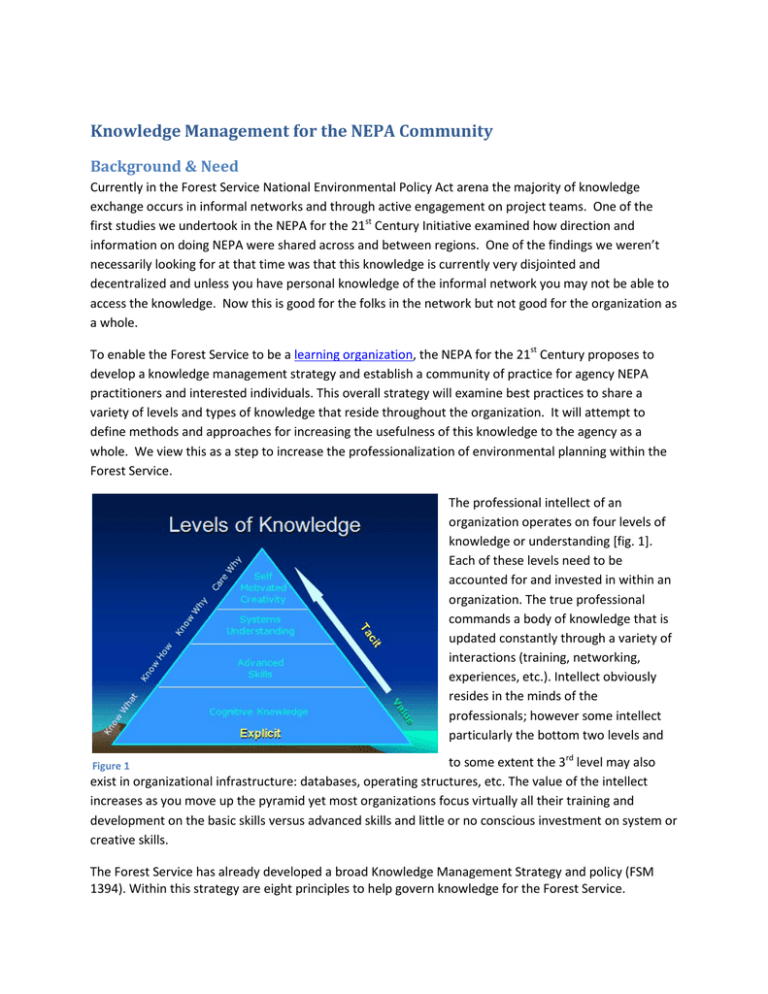
Knowledge Management for the NEPA Community Background & Need Currently in the Forest Service National Environmental Policy Act arena the majority of knowledge exchange occurs in informal networks and through active engagement on project teams. One of the first studies we undertook in the NEPA for the 21st Century Initiative examined how direction and information on doing NEPA were shared across and between regions. One of the findings we weren’t necessarily looking for at that time was that this knowledge is currently very disjointed and decentralized and unless you have personal knowledge of the informal network you may not be able to access the knowledge. Now this is good for the folks in the network but not good for the organization as a whole. To enable the Forest Service to be a learning organization, the NEPA for the 21st Century proposes to develop a knowledge management strategy and establish a community of practice for agency NEPA practitioners and interested individuals. This overall strategy will examine best practices to share a variety of levels and types of knowledge that reside throughout the organization. It will attempt to define methods and approaches for increasing the usefulness of this knowledge to the agency as a whole. We view this as a step to increase the professionalization of environmental planning within the Forest Service. The professional intellect of an organization operates on four levels of knowledge or understanding [fig. 1]. Each of these levels need to be accounted for and invested in within an organization. The true professional commands a body of knowledge that is updated constantly through a variety of interactions (training, networking, experiences, etc.). Intellect obviously resides in the minds of the professionals; however some intellect particularly the bottom two levels and to some extent the 3rd level may also exist in organizational infrastructure: databases, operating structures, etc. The value of the intellect increases as you move up the pyramid yet most organizations focus virtually all their training and development on the basic skills versus advanced skills and little or no conscious investment on system or creative skills. Figure 1 The Forest Service has already developed a broad Knowledge Management Strategy and policy (FSM 1394). Within this strategy are eight principles to help govern knowledge for the Forest Service. 1. Knowledge sharing connects people to people; people to tools, practices, processes, and strategies; and people to critical agency knowledge. 2. Knowledge sharing captures a wide range of learning from explicit to tacit. 3. Knowledge sharing is mentoring and networking sharing insight, wisdom, and experiences. 4. Forest Service policies, practices, programs, and stories are shared and conserved as the agency’s knowledge base. 5. Enduring Forest Service legacy is conserved through the sharing of documents, databases, procedures, and the use of collaborative tools. 6. Knowledge sharing and conservation bridges employee generations, and connects different perspectives. 7. Knowledge sharing approaches are situation dependent and context sensitive. 8. With knowledge comes responsibility. NEPA process continues to be a large investment for the agency. It currently consumes over 350 million dollars each year making it one of the largest activities the agency performs 1. Currently there is not a systematic approach to managing NEPA, and the experiences and skill levels differ greatly for individuals performing different aspects of this workload. A proactive strategy for knowledge management can provide a systematic approach to sharing, enhancing, and using knowledge surrounding this activity. Our Approach The purpose for developing a knowledge management strategy is to establish some type of framework to improve the exchange and use of various types of knowledge. Our approach will be to engage a variety of practitioners in the development of this strategy. The strategy will be somewhat fluid so it can account for the rapid changes in technology and can build upon the knowledge exchange as it occurs. Initially we will invest in the following areas: • • • Problem framing where we engage representatives from the community of NEPA practitioners to help clarify work activities and capture how knowledge is currently discovered and conveyed. A social network analysis to identify networks that currently exist and points that may constrain the exchange of knowledge. Develop a virtual community of practice that can enhance these existing networks by facilitating the exchange of information beyond traditionally established hierarchical boundaries. During our initial meeting, a small group of practitioners will spend considerable time familiarizing themselves with theories related to knowledge management and helping reframe the problem. They will engage in open dialogue about various tools that could be employed to enhance knowledge exchange within this community and help capture and organize existing knowledge about NEPA. 1 Fire suppression is the largest single activity for the agency at over a billion dollars a year. The amount of dollars spent on NEPA is greater than any other single appropriation.
